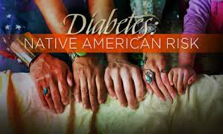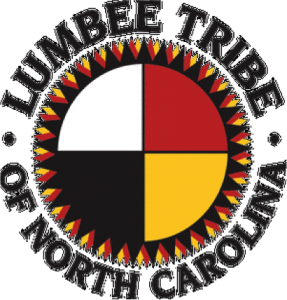Barriers to Healthcare Among Native Americans
Joslyn Chavis, SPT
Project Idea:
Diabetes mellitus (DM) is nearly three times more prevalent among Native Americans (NA) than Caucasians and is believed to be more prevalent in NAs compared to other racial minorities.1,2 The leading cause of death in NAs in North Carolina, of which there is a huge disparity between American Indians and whites, are heart disease, cancer, stroke, and DM.3 As a Native American of the Lumbee Tribe of NC, it is concerning to see such adversity among my people. During our health and wellness class, Tracy and I developed a health and wellness program focused on serving Native Americans with diabetes in the county I live in, Robeson County. We found that evidence supported diabetes mellitus prevention and treatment through a patient-centered approach focusing on physical activity, proper nutrition, and education.These were the major components of our program with an emphasis on multidisciplinary collaboration. The development of this program led me to ask many questions like “What diabetes intervention programs are currently available to Native Americans in Robeson County?”, “How might Native Americans respond differently to available diabetes intervention programs when compared to majority populations or other minority populations?”, and “What barriers to healthcare exist among Native Americans?”. These are the questions that led me to my capstone project.
It is evident that DM is a prevalent and serious concern for the Native American population, and that effective diabetes intervention programs are needed to manage and prevent this disease. It is necessary to ask what barriers or perceptions may hinder our ability to treat diabetes amongst this population. Identifying the barriers to health care and the health perceptions and views of Native Americans may allow clinicians to develop culturally appropriate interventions that are more effective.4,5,6

If Diabetes Mellitus is highly prevalent among the Native American population, what barriers to health care exist among this population and how do those barriers influence diabetes intervention programs?
Project:
For my project, I summarized my research into a literature review and presented the evidence with a powerpoint presentation to 3 individuals, a PT(one of my committee members), a PTA and a patient service representative (secretary) from a local PT clinic. I thought it was important to include the secretary because a patient’s healthcare experience begins with the first person they communicate with and often times that is the secretary. Each person filled out an evaluation form in order to give me feedback about my presentation.
I also developed an educational brochure focusing on diabetes management and prevention among NAs. This brochure was developed using a combination of evidence and ideas from the current literature review as well as my original project (with Tracy). The PT from the local clinic identified two NA patients with DM to participate in my project. I met with each patient individually to present the brochure, asked them questions about their experience managing DM, and asked them about barriers they feel are present for them, as well as other Native Americans as they try to manage or prevent DM. Each participant filled out a pre-test form and a post-test form and here are their results. I also wrote an interview summary for each patient summarizing our discussion.
Implications:
I have learned so much from this project and the entire experience that it is difficult to write my thoughts concisely. The major implications from this project or the “big take home” include the following: (1) barriers to healthcare exist among the NA population and can have a negative effect on outcomes of diabetes intervention programs for this population; (2) diabetes intervention programs that focus primarily on individual behavior changes may not be effective for the NA population and must be adapted to meet their cultural needs; and (3) greater development of cultural competence among health professionals is needed in order to eliminate the healthcare disparities that exist among NAs.
I plan to utilize the evidence found from my project to possibly implement some of the ideas found in the studies. For example, I want to present my project to my tribe and the wellness director of Robeson County to begin developing ideas for a community fitness center and local fresh market, as well as programs that teach and demonstrate how to cook healthy meals.
Acknowledgements:
I would like to thank Christina McMillian, PT and Chelsea Thomas, DPT for being my committee members and for helping me through this process. I would also like to give special thanks to Laurie Ray, MPT, PhD for all your input and support along the way.
References:
- Indian Health Service. Improving the quality of health care 2004: measuring successes and challenges—Government Performance and Results Act Executive Summary. Rockville, MD: Indian Health Service, 2004.
- U.S. Department of Health and Human Services, Indian Health Services, Division of Diabetes Treatment and Prevention: Diabetes in American Indians and Alaska Natives. Washington, 2007
- Bell RA. Health issues facing American Indians in North Carolina. http://view.officeapps.live.com/op/view.aspx?src=http%3A%2F%2Fwww.unc.edu%2F~flega%2FPresentation%2520to%2520UNC%2520School%2520of%2520Public%2520Health%252011-27-06.ppt. Accessed September 11, 2014.
- Pichette EF. Cultural identification of American Indians and its impact on rehabilitation services. J Rehab. 1999;65:3–10.
- Michielutte R, Sharp PC, Dignan MB, et al. Cultural issues in the development of cancer control programs for American Indian populations. J Health Care Poor Underserved. 1994;5(4):280–96.
- Taylor CA, Keim KS, Sparrer AC, et al. Social and cultural barriers to diabetes prevention in Oklahoma American Indian women. Prev Chronic Dis. 2004 Apr;1(2): A06. Epub 2004 Mar 15.


2 Responses to “Barriers to Healthcare Among Native Americans”
Lisa Johnston
Joslyn:
Really nice job on your project. I am excited to see you working on a project that is so meaningful to you and your community. Nice job pulling this together. I hope to see more work like this from you as you are working in your community. You have a lot to offer your community and I know you will do many good things. Lisa
Karen McCulloch
Hi Joslyn, This is looking good – just want to make sure that you’re going to include the health literacy assessment that we talked about on the phone last week too – when you emailed you mentioned needing to put your lit review results on the site, but the HL assessment is a priority from my standpoint. I’ve gotten feedback from both of your cmte members that looks great, and I have confirmation that Laurie will be taking a look at your project too. Thanks for doing such a nice job of keeping yourself on track this semester, I know its harder to get than done when you’re kind of “out there on your own”.
In terms of questions that I have about the project, it looks like there is a common theme with your respondents that there is difficulty shifting eating habits and both also mentioned the financial aspects of dealing with diabetes. Are there tribal or community resources available in Robeson County that pts could be referred to for assistance with nutritional counseling or assist in dealing with the financial aspects? I don’t know if that is about being able to afford healthy food, or if its more about being able to afford the supplies necessary for diabetes mgmt. Interested in your thoughts about this. Are there cultural norms about being able to grow your own food that could be harnessed synergistically to help with either one of these things?